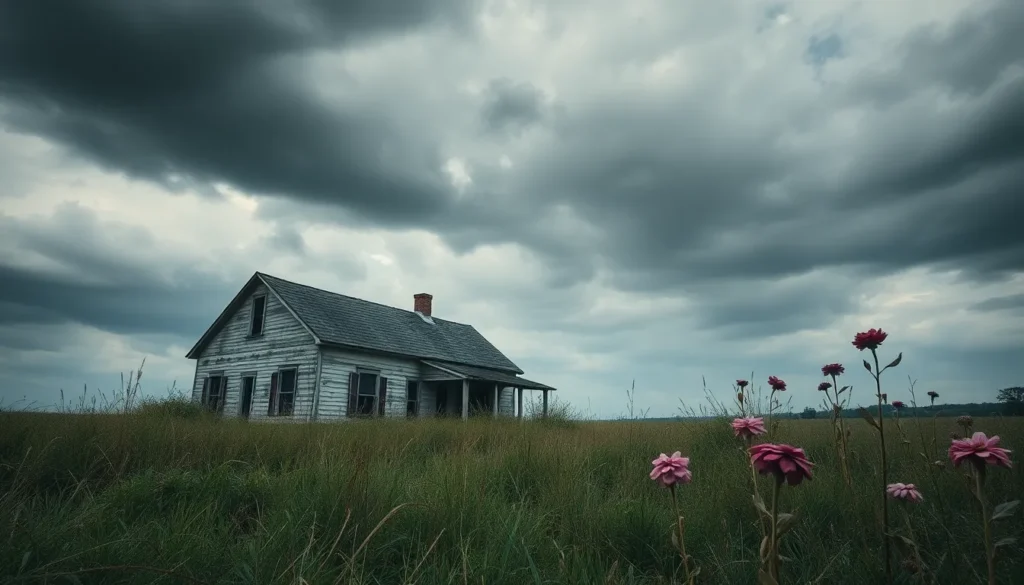Table of Contents
ToggleImagine stepping into a world where every tree, shadow, and crumbling wall tells a story. That’s the magic of symbolic setting. It’s not just a backdrop; it’s the unsung hero of storytelling that shapes characters and drives plots. When done right, a setting can whisper secrets and amplify emotions, turning an ordinary scene into a vibrant tapestry of meaning.
Understanding Symbolic Setting
Symbolic setting plays a crucial role in storytelling by adding layers of meaning to narratives. A well-defined setting enhances themes, character growth, and plot dynamics, making stories more engaging.
Definition and Importance
Symbolic setting refers to a location or environment with significant meaning beyond its physical attributes. Settings often symbolize emotions, themes, or character traits. For instance, a decaying house might represent lost hope or past trauma. Such symbolism deepens storytelling and guides audience interpretation. Writers can elevate their narratives by connecting themes and character arcs to the setting. This connection shapes reader perception and heightens emotional impact, leading to a memorable story experience.
Key Elements of Symbolic Setting
Several key elements contribute to a strong symbolic setting. Atmosphere sets the tone, influencing emotional responses; descriptions create vivid imagery for reader immersion. Key features might include architecture, natural elements, and cultural artifacts. Each object can serve as a metaphor, reflecting characters’ emotions and struggles. Locations should also relate to character development, acting as catalysts for growth or change. By combining these elements, authors create multi-dimensional settings that resonate with audiences and enhance narrative depth.
Examples of Symbolic Setting in Literature

Symbolic settings significantly enhance the storytelling experience, allowing deeper connections between characters and their environments. They serve as powerful tools for communicating themes and emotions.
Classic Literature
In classic literature, settings often symbolize broader societal themes and individual struggles. In “The Great Gatsby,” F. Scott Fitzgerald uses the green light at the end of Daisy’s dock to represent Gatsby’s unreachable dreams. Similarly, the decaying mansion in “Wuthering Heights” mirrors the tumultuous relationships and emotional turmoil of its characters. Each location shapes reader understanding, drawing attention to the characters’ internal conflicts and societal critiques.
Modern Literature
Modern literature continues to explore symbolic settings with innovative approaches. In “The Road” by Cormac McCarthy, the desolate landscape signifies despair and hopelessness. The ashes and barren terrains reflect humanity’s struggle for survival in a post-apocalyptic world. Additionally, in “The House of the Spirits” by Isabel Allende, the family estate becomes a symbol of power, tradition, and the enduring nature of personal and historical legacies. These settings enrich narratives and deepen emotional engagement, allowing readers to connect with the underlying themes.
Analyzing Symbolic Settings
Symbolic settings enrich narratives by connecting locations to deeper themes and character arcs. This analysis helps uncover hidden meanings within a story.
Techniques for Analysis
Identifying symbolic settings begins with recognizing the emotional resonance of a location. Examining descriptions enables readers to see how settings reflect characters’ inner lives. Observing character interactions within these spaces reveals additional layers of meaning. Analyzing contrasting settings can highlight character development and thematic evolution. Noticing repeated motifs in different environments strengthens understanding of a narrative’s core messages.
Impact on Themes and Characters
Symbolic settings reflect key themes that shape the narrative’s direction. They often illustrate conflicts, aspirations, or fears of characters. For example, a vibrant landscape can symbolize hope and renewal, while a desolate place may represent despair or stagnation. Characters often undergo transformation influenced by their surroundings. Settings play an integral role in guiding audience interpretation of character motivations and emotional journeys. Their impact extends to enhancing emotional depth, ultimately engaging readers more profoundly.
The Role of Symbolic Setting in Visual Media
Symbolic settings play a pivotal role in visual media, offering layers of meaning that enhance narratives. They serve as more than mere backdrops, providing context for character actions and emotional depth.
Film and Television
In film and television, symbolic settings significantly shape viewer perception. Locations often reflect characters’ emotional states, such as the contrast between a bright, sterile hospital and a dark, rundown alley. Consider “Inception,” where dream landscapes symbolize psychological conflicts. This showcases how environments influence character decisions and drive narratives forward. Numerous films explore themes through strategic settings, engaging viewers more deeply. Each scene becomes an opportunity for storytelling; even silence can speak volumes in a carefully designed space.
Theater and Performance
Theater employs symbolic settings to evoke emotions and convey themes more vividly. Stages often transform with minimal props, utilizing light and shadow to create atmospheres that echo characters’ inner turmoil. For example, in “Death of a Salesman,” the cramped living space illustrates Willy Loman’s confinement and failure. Performers interact with their environment, which heightens the emotional stakes of their scenes. Each setting contributes to the overall narrative, inviting audiences to immerse themselves in the characters’ experiences. Ultimately, the symbolic aspects of stage design enrich storytelling and elevate the audience’s understanding of the drama unfolding before them.
Symbolic settings are essential in enriching narratives and enhancing emotional engagement. They transform ordinary locations into powerful symbols that reflect characters’ inner lives and thematic elements. By skillfully integrating atmosphere and vivid descriptions, writers can create multi-dimensional settings that resonate with readers.
Through the use of symbolic settings, storytelling becomes a deeper exploration of human experience. This technique not only shapes character development but also guides audience interpretation, making the connection between characters and their environments more profound. In both literature and visual media, the impact of symbolic settings remains a vital component of effective storytelling.







